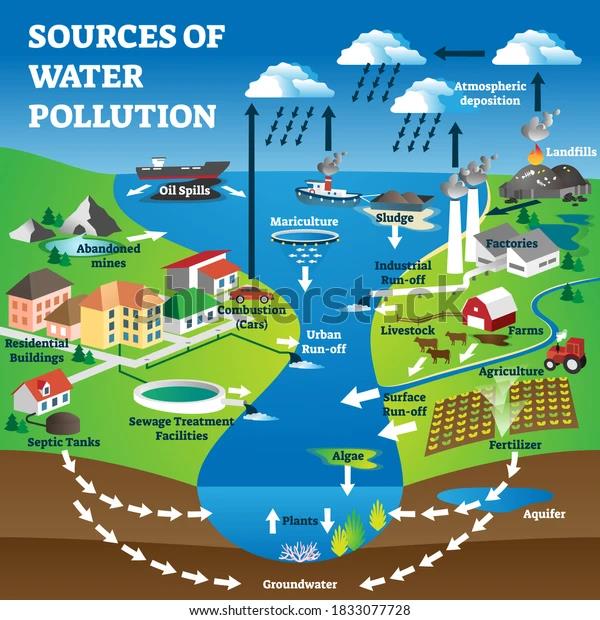PDF chapter test TRY NOW
Pollution of Water
Water pollution may be defined as alteration in the physical, chemical and biological characteristics of water, which may cause harmful effects in human and aquatic life.
India is facing large scale water pollution for a long time. Both surface and groundwater bodies are polluted to a great extent. Around 80% of India’s water is highly polluted due to dumping garbage, raw sewage, and silt into the country’s rivers and lakes.

Every year, more than \(1.5\ million\ \)children die from diarrhoea in India. Out of the entire Indian population, experts predict that \(40%\) of people may not connect to a clean water source by 2030.
The major causes of water pollution in India are:
- Urbanisation
- Industrial effluents
- Sewages
- Agricultural runoff and improper agricultural practices
- Seawater intrusion
- Solid wastes
